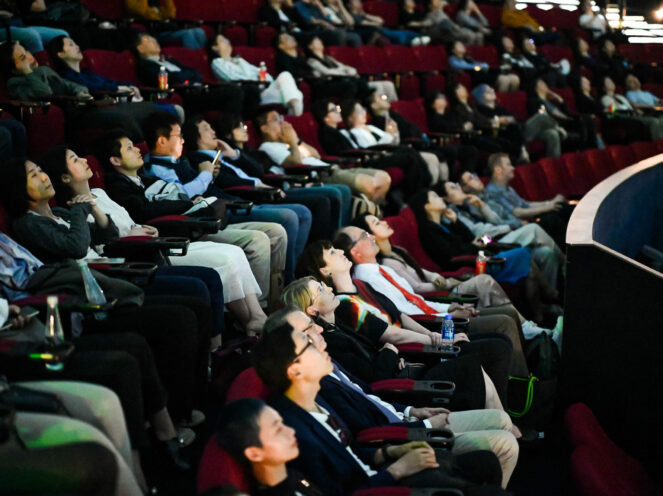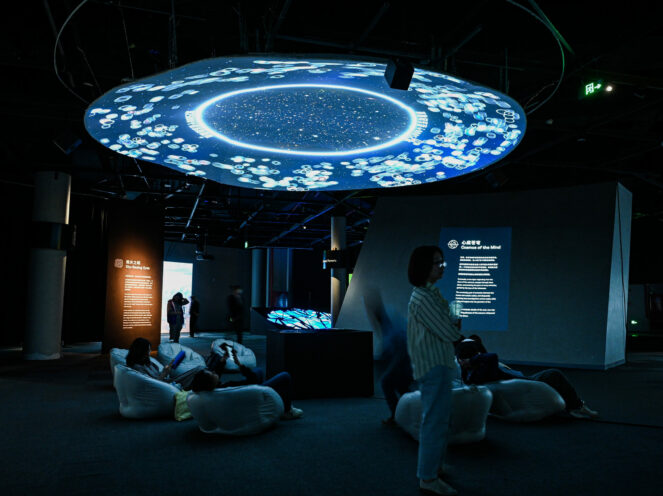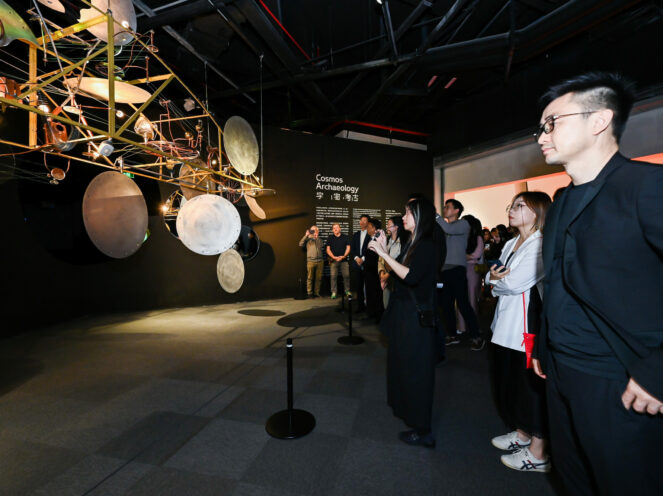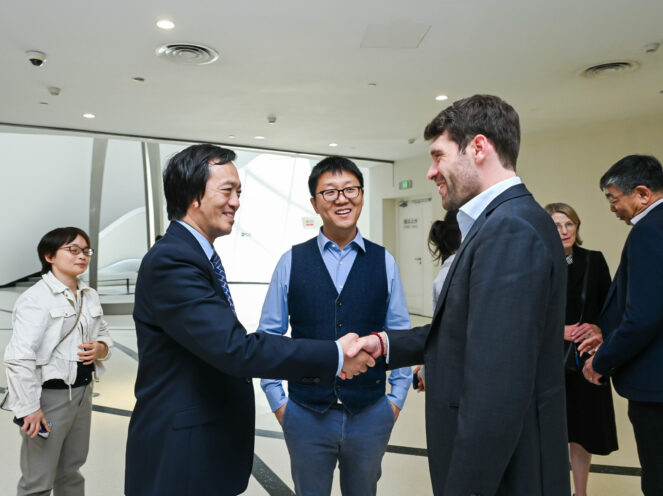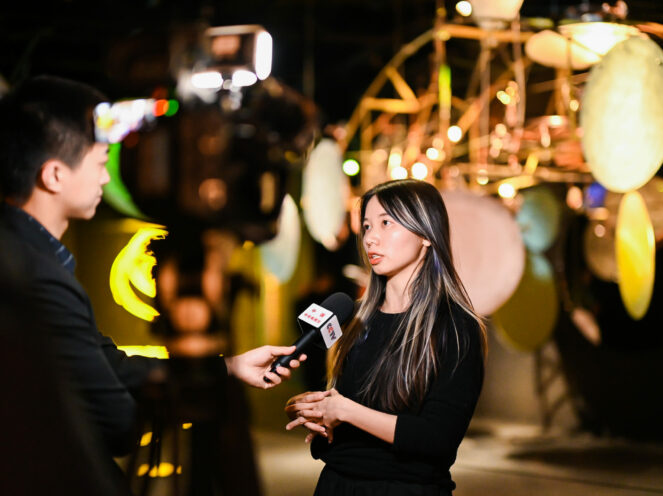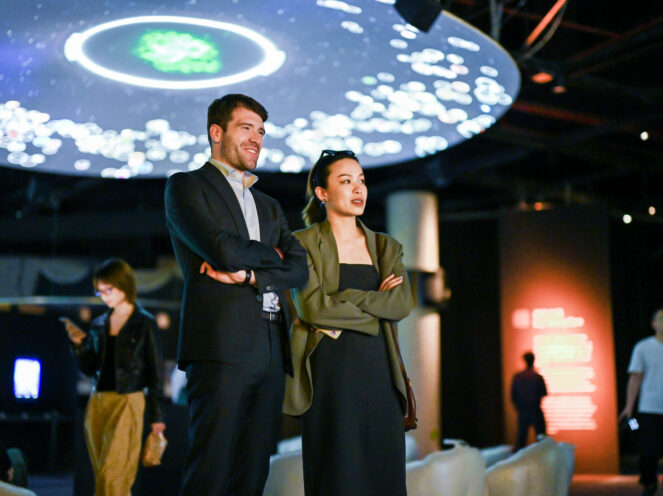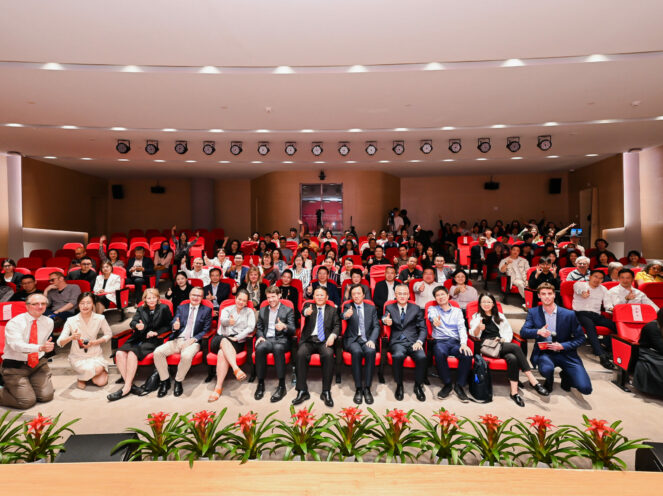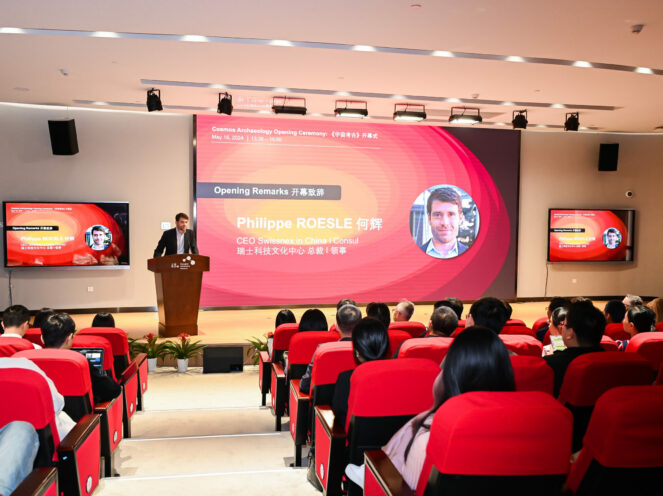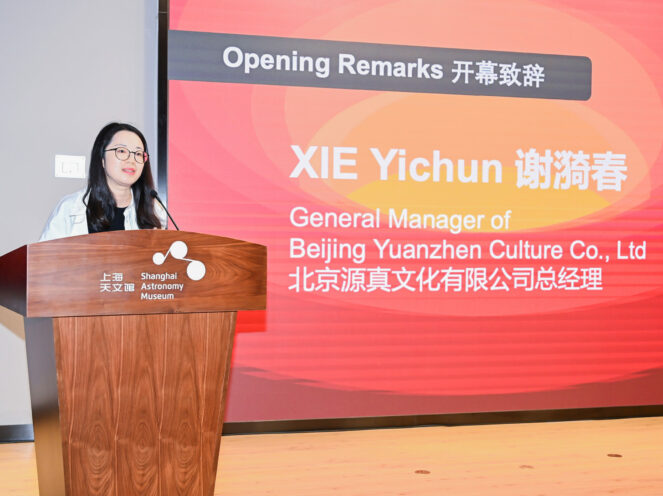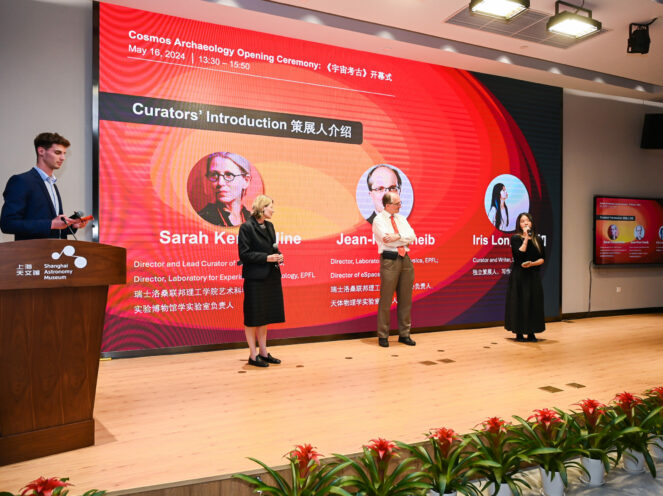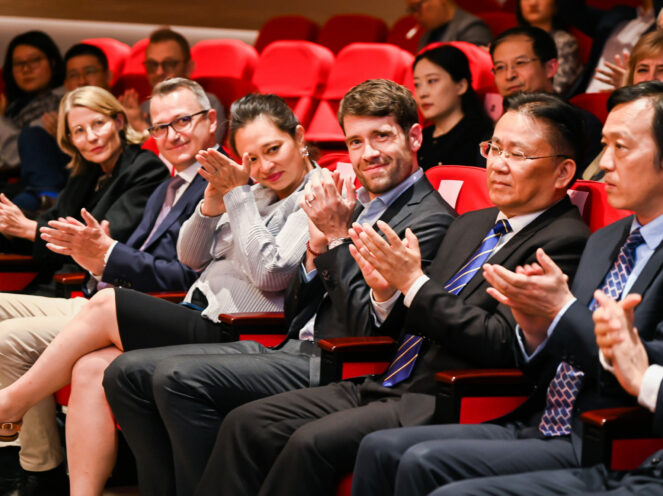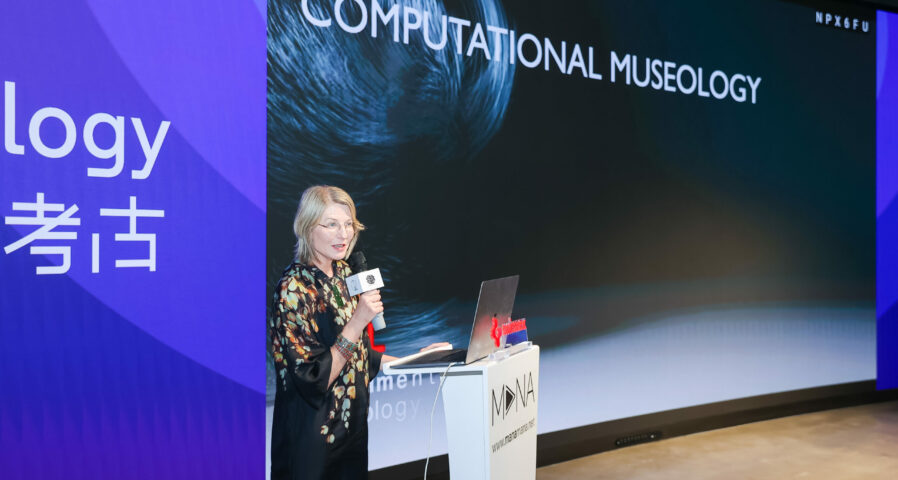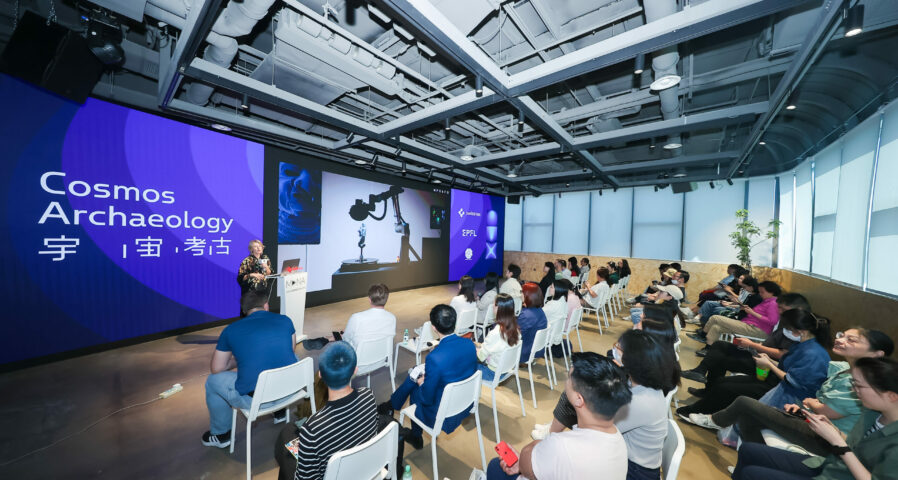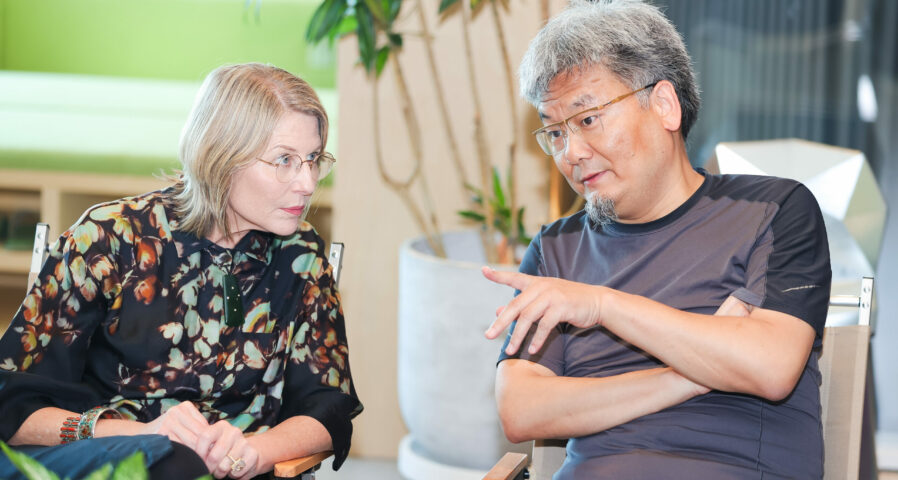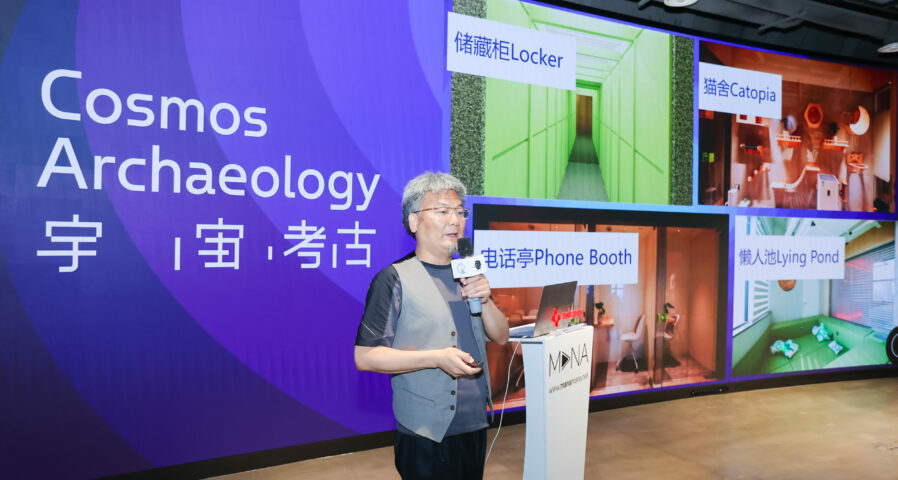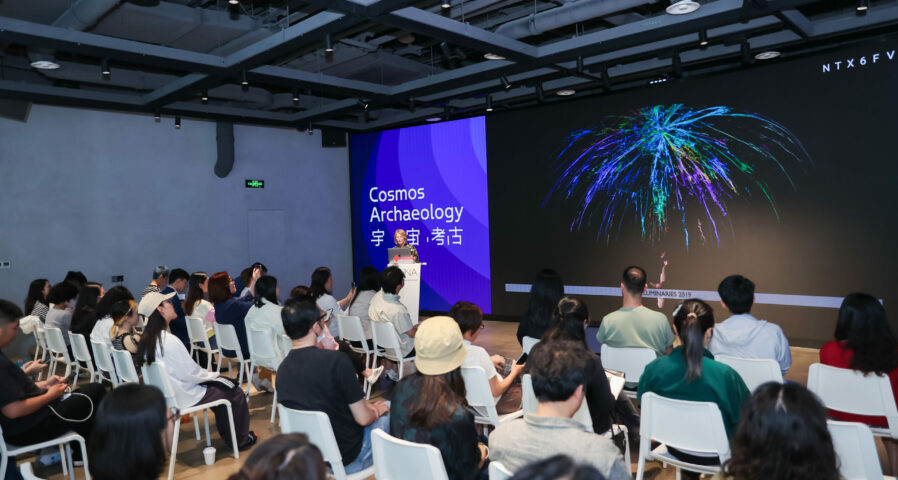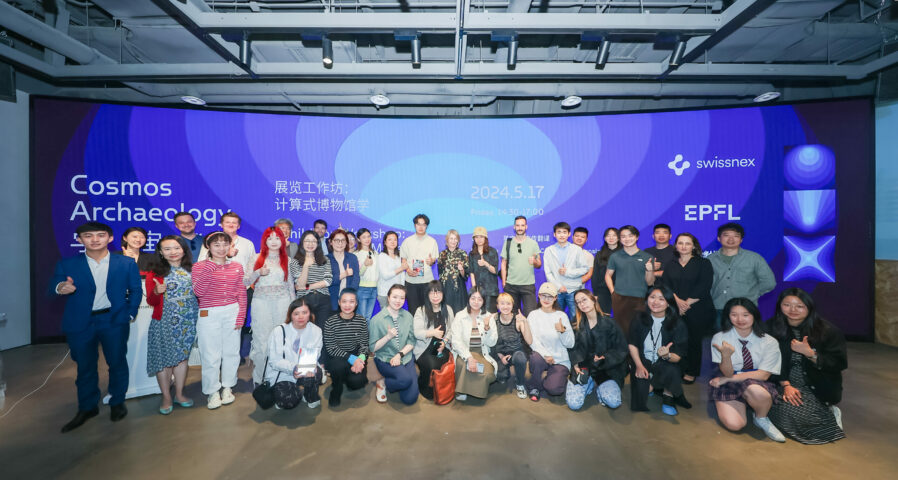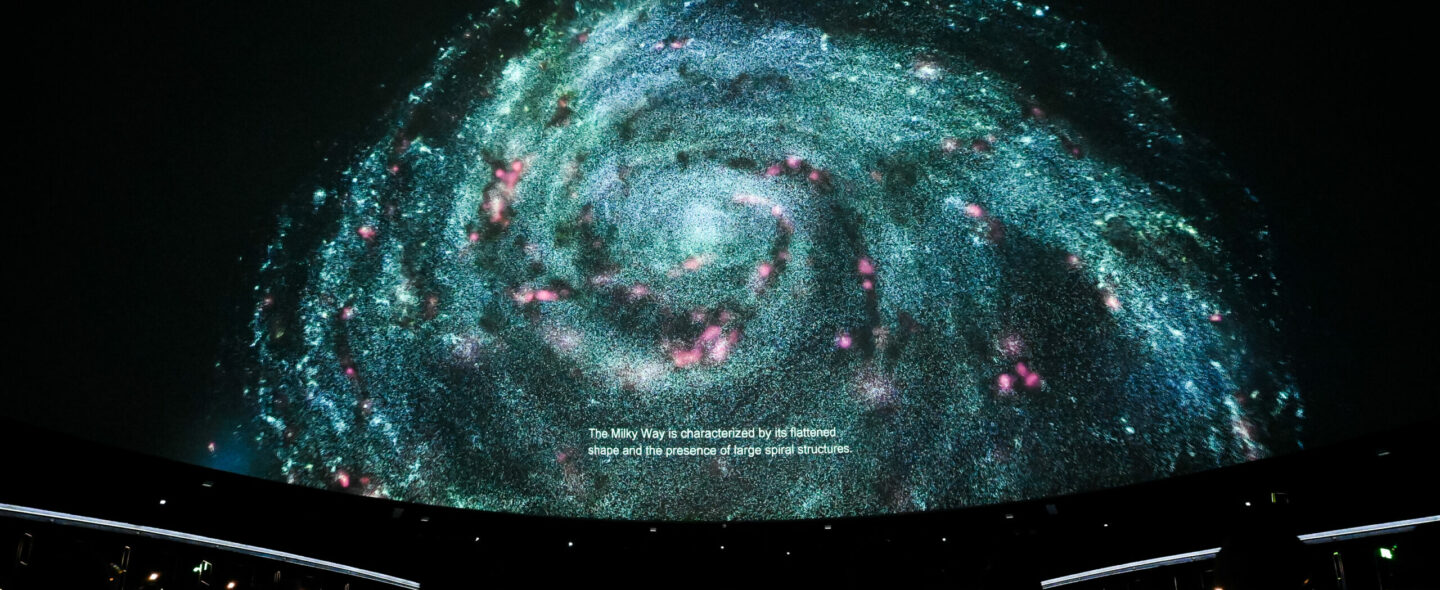
However, the average person often lacks knowledge of astronomical data, let alone the ability to understand it. How can we open this discipline to the general public? How can scientific data be visualized? These questions were explored through the Cosmos Archaeology exhibition and discussed at the Opening Symposium. Could art be the answer?
The Cosmos Archaeology exhibition kicked off its opening week with a series of events that brought together the worlds of art and science. This unique exhibition, which transforms astrophysical data into tangible realities, has brought scientists and artists into interactive dialogues, marking the beginning of this ambitious project. Swissnex in China played a central role here in promoting international and interdisciplinary collaborations.
During the Opening Ceremony we heard from our partners and curators. We engaged in discussions on the convergence of scientific research and artistic interpretation of cosmic data during the Opening Symposium organized by Swissnex in China. The workshop on computational museology showcased the transformation of abstract data sets into immersive sensory experiences.
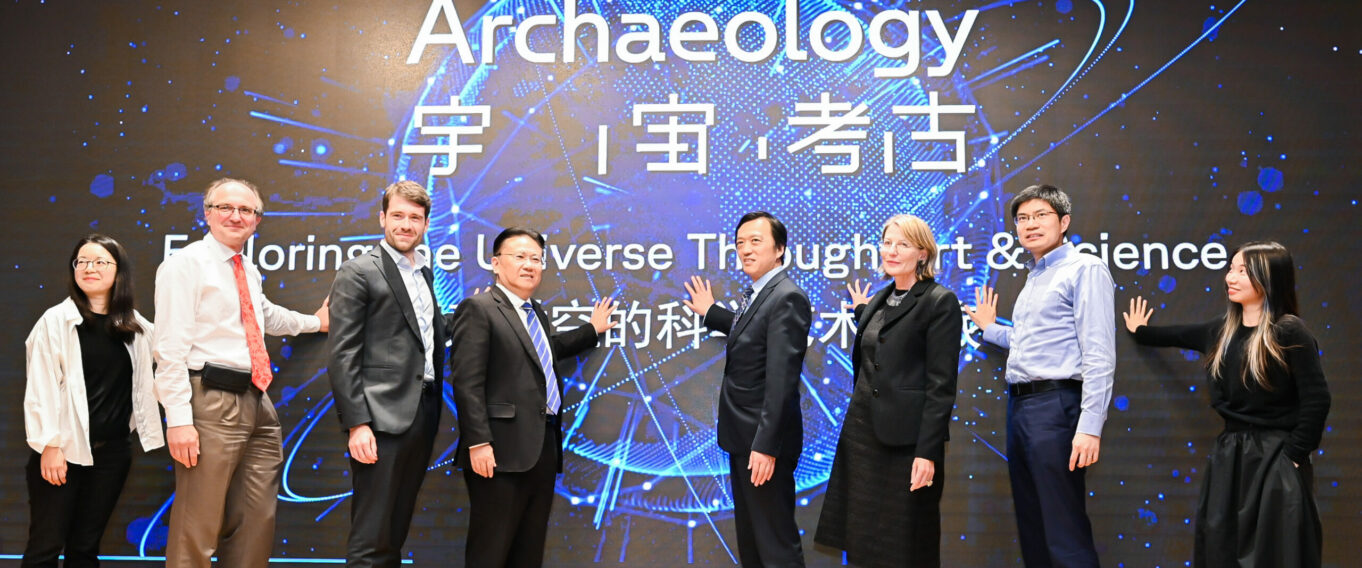
The Opening Ceremony
Launching into the Cosmos
The Opening Ceremony of the exhibition at the Shanghai Astronomy Museum was a formal celebration of creativity and collaboration, featuring speeches from curators, artists, and academic partners. The curators offered a guided tour of the exhibition, followed by a film screening in the museum’s dome. This event highlighted the exhibition’s mission to foster international dialogues on astrophysics, artistic expression, and space sustainability.
Symposium
Encounters between Art, Science and the Universe
The symposium was a discussion showcasing the synergies between art and science. Held at the Zikawai Library, it featured three panels moderated by the exhibition’s curators, each offering a unique perspective on how these two disciplines converge.
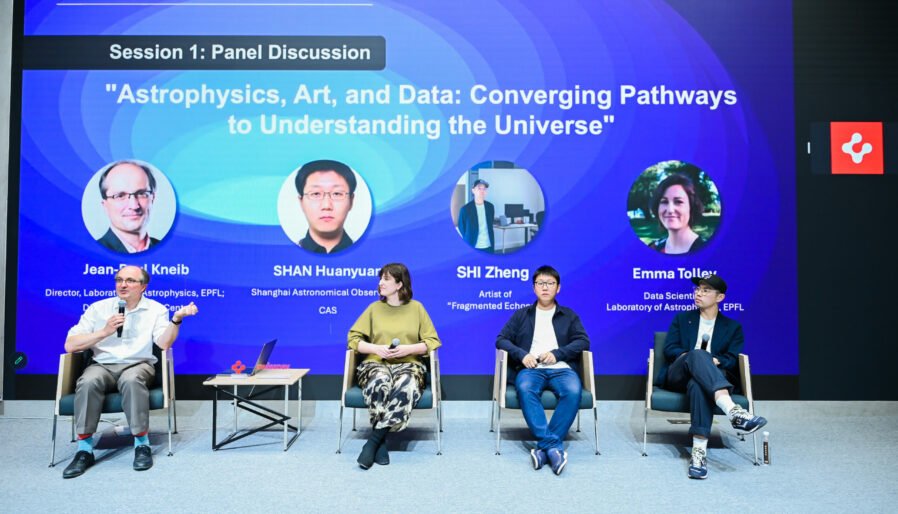
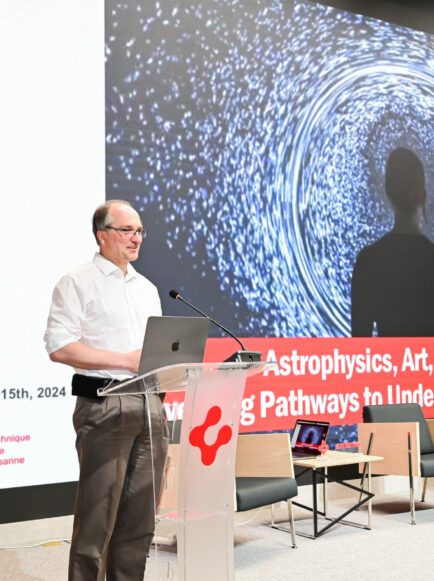
Session 1: "Astrophysics, Art, and Data: Converging Pathways to Understanding the Universe"
Delving into the integration of data analytics, artistic interpretation, and astrophysical research, the panelists explored how these elements collectively improve our understanding of the cosmos. A key discussion point was the challenge of communicating scientific data to the public. While scientists often present data in numerical form, which can be abstract and inaccessible, artists propose using visualizations to make this information more engaging and understandable. This interdisciplinary approach not only enriches public understanding but also inspires innovative ways of thinking about the universe.
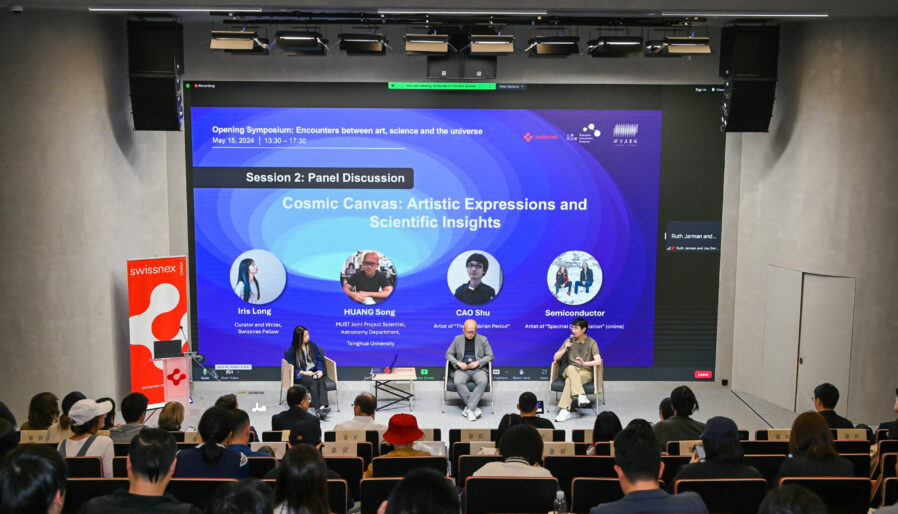
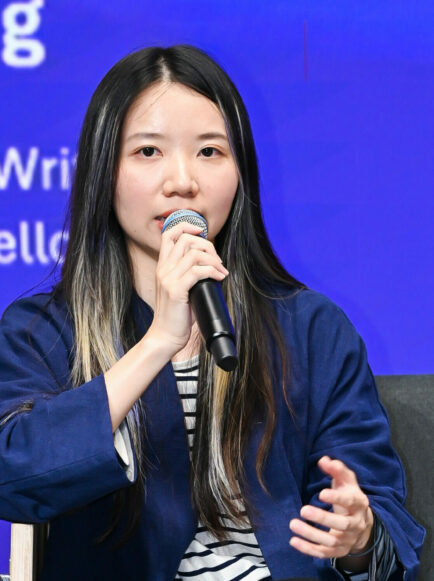
Session 2: "Cosmic Canvas: Artistic Expressions and Scientific Insights"
In this session, artists and scientists shared the inspirations behind their works and research. The conversation highlighted the creative processes of artists who translate complex scientific concepts into accessible visual narratives. This convergence between art and science not only adds appreciation from the public's perpective to both of these fields but it also takes them on a deeper journey and connection into the mysteries of the cosmos.
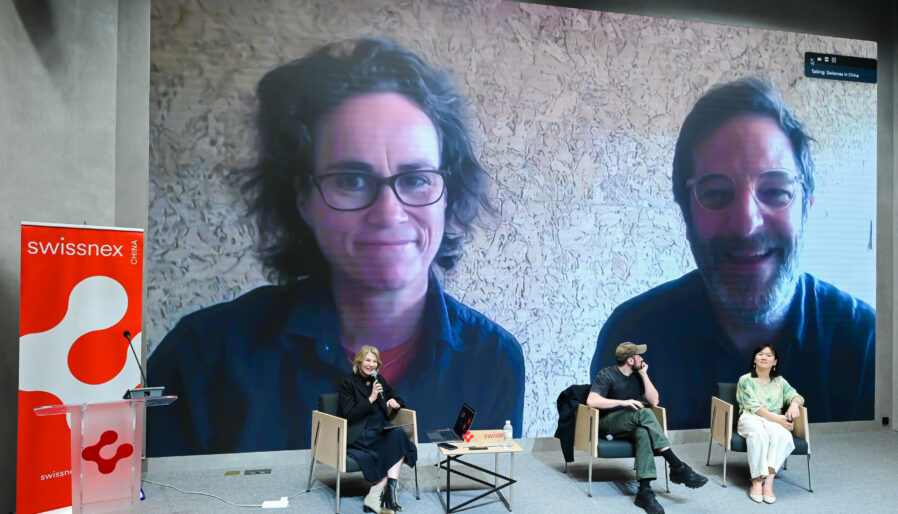
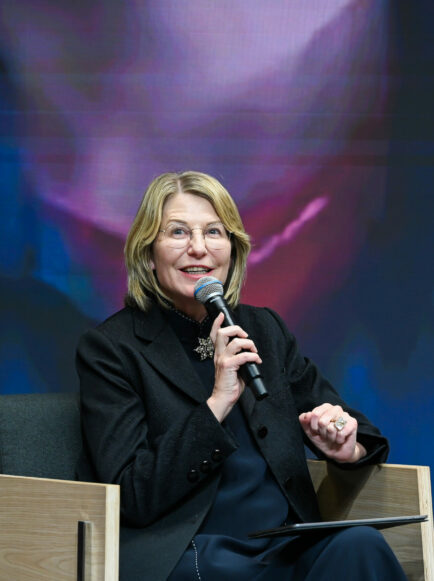
Session 3: "Art, Science, and Space Sustainability: Bridging Worlds through Creativity"
The final session addressed the critical issue of space sustainability, emphasizing the role of art in visualizing and addressing environmental challenges in space. Panelists discussed the increasing problem of space debris and the innovative ways artists are bringing attention to this issue through their works. This session underscored the importance of interdisciplinary collaboration in finding creative solutions to global challenges.
Workshop
Computational museology
The week concluded with a hands-on workshop on computational museology, led by Professor Sarah Kenderdine, Director and Lead Curator of EPFL Pavilions and hosted by Swissnex in China in collaboration with MANA New Media Art Platform. Held at The Point Space in Xuhui District, this workshop offered practical insights into integrating immersive visualization technologies with cultural big data. Participants engaged with abstract data sets, transforming them into sensory experiences that enhance audience interaction with the artworks. The session provided art practitioners and curators with new tools and perspectives, complementing the symposium’s theoretical discussions. Professor Kenderdine introduced computational museology as a discipline combining machine intelligence, data curation, visualization, and immersive public interactions, aimed at facilitating engagement with cultural heritage.
About the Exhibition
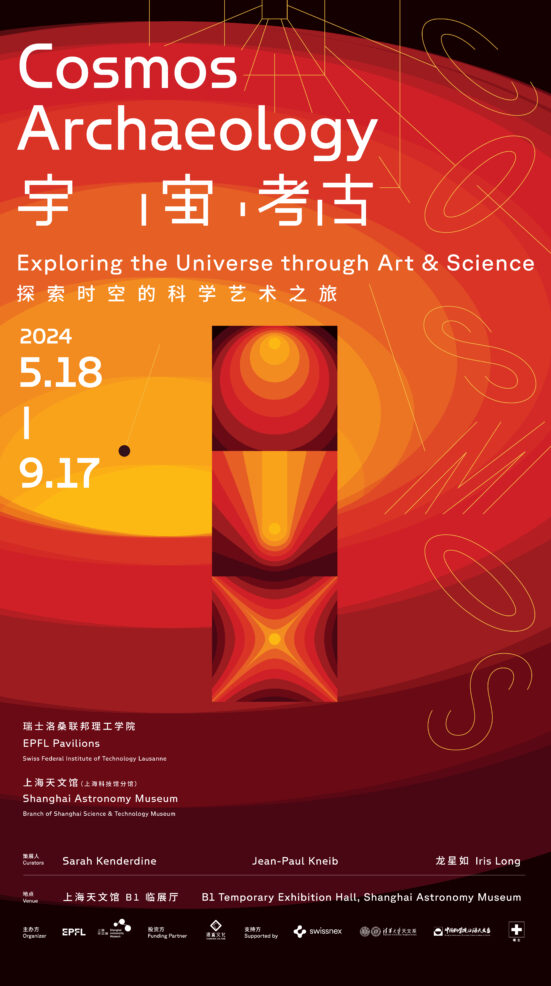
Presented by Shanghai Astronomy Museum, EPFL, the Swiss Federal Institute of Technology in Lausanne, and Swissnex in China, Cosmos Archaeology will bring the latest international achievements at the intersection of art and astronomy to domestic audiences. The exhibition follows the trajectory of light from the vast and distant depths of space to the surface of the Earth. In the six chapters “Edge of the World,” “Deepspace Landscapes,” “Orbital Forests,” “Sky-Gazing Eyes,” “Hidden Pasts of the Cosmos,” and ” Cosmos of the Mind,” each piece weaves a narrative of a certain scale: What is the origin of the universe? How do large astronomical installations gaze into deep space? Can we glimpse our own fate in the cosmos? How are the myths of the sky interpreted in contemporary times? In the exhibition, data and scientific visualizations about the universe are intertwined with cultural imaginations, stories, and philosophical reflections about the universe. They not only translate, reproduce, and interact with the “sky mapping” data drawn from optical sky survey missions such as the Sloan Digital Sky Survey (SDSS) but also include perspectives from the humanities or science fiction related to exploring extraterrestrial civilizations, sustainable space development, and astronomical history.
The artworks featured in “Cosmos Archaeology” primarily result from the close collaboration between the humanities and astronomy. This key exhibits from EPFL is co-created by the EPFL’s Laboratory for Experimental Museology (eM+) and Laboratory of Astrophysics (LASTRO). Additionally, the exhibition highlights collaborations between artists and prominent astronomical projects, including the MUST Telescope from Tsinghua University and the Chinese SKA Science Projects led by the Shanghai Astronomical Observatory.
This exhibition is generously supported by Beijing Yuanzhen Culture Co., Ltd, Presence Switzerland, the Department of Astronomy at Tsinghua University, the Shanghai Astronomical Observatory, Chinese Academy of Sciences, and Swissnex in China.
